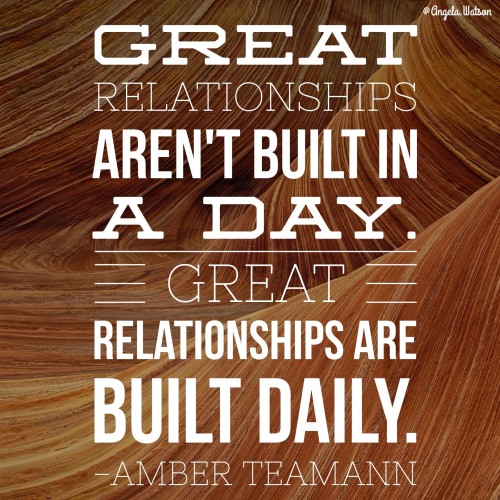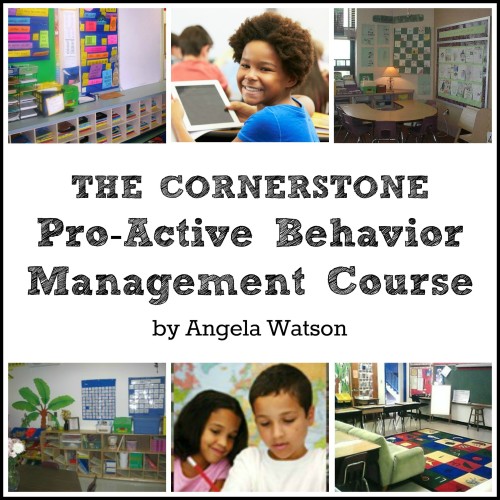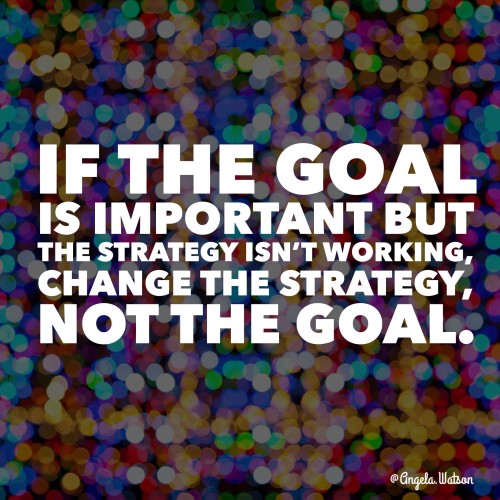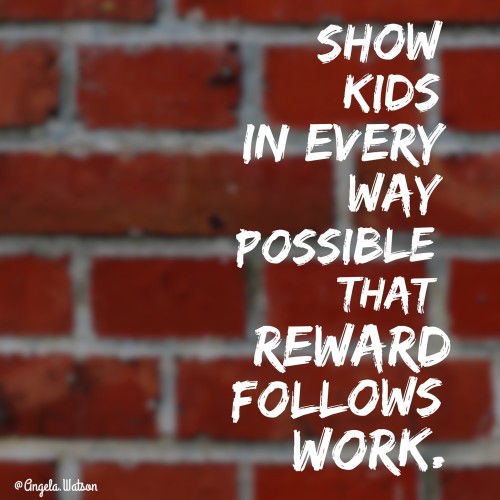In last week’s Truth for Teachers episode, I explained why ‘reward’ isn’t a bad word and argued my case for why they can be an integral part of your classroom practice. I talked about how a district administrator criticized me during a surprise walkthrough and why I think that teachers, of all people, know how detrimental it is to be expected to work hard in a place where they’re not recognized or appreciated for their efforts.
We do not want to create that same culture in our classrooms.
So, if you have a problem with rewards or just want to know why I think rewarding students is appropriate, check that episode out first. That was the WHY. In this episode, I’m going to share the HOW.
Want to listen to this post instead of read? Click the player above!
I’ve found that the most effective way to use rewards with students is by creating a culture of appreciation in the classroom and using unexpected “now-that” rewards.
When we talk about building the culture of appreciation, some teachers like to mention a whole-class reward system. A reward system is different from a behavior management system.
‘Flipping your card’ and ‘moving your clip’ are behavior management systems. Students are acknowledged when they misbehave.
A reward system does not track misbehavior or provide any sort of punitive consequences. Instead, it provides an incentive for students to work hard and exercise self-discipline, and gives a pay-off when they do. For young students, there’s the added benefit of taking very abstract ideas like being responsible and showing respect to others, and pairing them up with concrete things that having meaning to students.
A whole-class reward system allows you to recognize individual children by giving compliments accompanied by a token, bean, counter, or some other small item when they make good choices. I created one that I called the bead reinforcement system.
It’s a simple premise: kids earn beads which are traded in at the end of the week for additional center time. Bead distribution was fairly random and unexpected: the kids never knew when they’d get one because I didn’t dangle the promise of reward ahead of time with bribes like “If you’re quiet, you’ll get a bead.”
Instead, I’d give a task and watch for positive actions to reinforce with specific praise and a symbol of appreciation (the bead): “I love how you kept trying even when the work was hard” or“You were so patient and supportive when you explained that answer to him.” I’d quietly slip the child a bead and watch her face glow with satisfaction, knowing that she’d made a good choice and it was noticed by someone who cared about her.
I loved this system because it kept my focus on the positive things kids were doing, and I felt like most of them responded by doing the right thing because it was the right thing to do, and not in anticipation of earning a bead.

To be honest, I wasn’t sure exactly why the system worked so well until I read Daniel Pink’s book Drive: The Surprising Truth About What Motivates Us. Drive isn’t a book about education, per se (it’s a Malcolm Gladwell-type read that compiles research studies into really compelling stories), but most of what the author talks about is relevant to teachers since one of our biggest and most challenging tasks is getting kids motivated to learn.
Pink conducted a number of fascinating behavioral studies, including a bunch with children, to see what factors made them want to work hard and try their best. He writes,
When children didn’t expect a reward, receiving one had little impact on [did not detract from] their intrinsic motivation. Only contingent rewards–if you do this, then you’ll get that–had the negative effect. If-then rewards require people to forfeit some of their autonomy… and that can spring a hole in the bottom of their motivational bucket, draining an activity of its enjoyment.
Instead of “if-then” rewards, Pink recommends “now-that” rewards.
The practical application? Think about recess, the classic student motivator.
If you tell kids that if they get their work done, then they’ll get to go to recess early or have free time, you’ll take their focus off the work itself. Throughout the assignment (and every time you give one afterward), the class will be waiting for you to offer them their motivation, and rushing through the task to get to it. On days when they won’t be able to have extra free time, there will be little incentive to complete the task. Kids not only expect the reward, but often start criticizing or questioning the teacher when they don’t get one.
But the outcome is totally different if you have students complete the assignment and afterward say that now that they’re done, you’ll allow some extra recess time.
When you expect kids to do their work everyday with no mention of reward and then surprise them occasionally with a gesture that shows appreciation for their ongoing and continual hard work, they’ll learn to focus their attention on the task and not the reward.

You have to intentionally cultivate this culture of appreciation so kids don’t ask for rewards. Explain to students:
The extra free time is a Thank You gift. You can’t ask someone for a gift. Just like I don’t ask you, When are you going to draw me another picture or bring me flowers you picked? I just try to be the best teacher I can be, and accept any recognition and appreciation you all give me. You can’t expect the gift of a reward from me. Don’t steal my ability to surprise you with something you love. Just do your job well and do things that inspire gratitude and appreciation in others.
Then, when you DO provide a reward after a job well done, the kids show gratitude and there’s a moment of shared pleasure as the teacher gets to do something nice for the children she cares about and they actually appreciate it.
It’s a totally different classroom climate–you’re building that culture of appreciation by modeling it for students. We often expect students to be grateful to us as teachers but how often do we model gratitude for them?
These “now-that” rewards can be regularly infused into the school day to model gratitude, reinforce classroom expectations, and let students know you’re noticing their good choices. Here are some examples to get you thinking:
- When students use manipulatives the correct way during a lesson,give some free time with the materials. Say, “You all did a fabulous job staying on-task and practicing your math skills. I’m going to give you the last few minutes of our time to create a design or pattern with them in any way you choose. Have fun!” Then when you incorporate manipulatives again in an upcoming lesson, tell the kids you’re doing so because of their hard work and effort the last time: the reward is an expression of appreciation to them.
- After kids successfully stay engaged during a tedious test prep activity or other paper and pencil task,announce that you’ll let the class complete the last few questions using individual wipe-off boards. (You know you can get a class set for about $15 using a shower board from a home improvement store, right?) Let the kids decorate the boards with their markers as they work. Use the boards again during the next lesson if the kids are responsible with them, and point out that’s why they’ve gotten to use the boards so much.
- Present differentiated tasks as a “now-that” reward, even if you were planning to provide choices all along.Tell the class you’ve noticed their hard work on a research project and you’re going to let them choose their presentation method: recording a video, writing a blog post, making a slideshow, creating a skit, etc. Make a clear connection between the good decisions they’ve made and your allowance for more freedom of choice.
- If you finish a lesson early because you didn’t have to stop a hundred times to redirect behavior, tell the kids that, and let them use the time for something fun.“You were focused and attentive today, and I’m really impressed by how well you helped manage our time. Since I wasn’t interrupted by kids playing around, you were able to learn this material in only 40 minutes instead of 45! That gives us an extra five minutes to play a game.” Play a quick round of a review game or other short activity the kids love.
- Recognize whole class achievements.When every person in the entire class does something truly miraculous (like getting an 80% or higher on a test, turning in all their homework, or behaving maturely on a field trip), give up your lunch period and eat with the kids in the classroom or outside in an impromptu picnic. Let the kids see that you truly enjoy talking and laughing with them. If you can, go out on the playground together and participate in a class game like kickball. Figure out something that works for your students and teaching context.
The more you incorporate “now-that” rewards into instruction, the better students understand that their behavior impacts the way the classroom is run, and they will be more motivated to follow the routines and put in effort. They will demonstrate a more positive attitude toward you and a willingness to work together with their classmates toward a common goal.
Just as you’ve shown gratitude for their efforts, they will show gratitude for yours and will think carefully about how to show you they are responsible and ready for additional privileges.

If you want to find out more about meaningful, effective rewards, check out my online course on on pro-active behavior management. It’s a five-part series that explains how to choose incentives and rewards that work for your students and reinforce self-discipline as well as shared responsibility for making the classroom run smoothly. The course walks you through everything from teaching routines and procedures to how to respond when students don’t meet expectations, to individual behavior plans for students who need extra support. Click here to watch free excerpts and learn more.
“Now that” rewards–non-contingent rewards given after a task is complete–can be effective in reinforcing good choices without undermining intrinsic motivation. “Now-that” rewards are especially effective when they provide useful information about performance and you give verbal feedback about why the reward was given.
So even though “now -that” rewards are effective even creative tasks, we still want to make sure we’re not distracting students from the inherent value of the work itself.
Is there still a time and place for “if-then” rewards? Daniel Pink’s research tells us yes.
He argues that carrots and sticks aren’t all bad. They can be effective for rule-based routine tasks, particularly when the person giving the reward offers a rationale for why the task is necessary, acknowledges that it’s boring, and allow people autonomy over how they complete it.

The reason why “if-then” rewards work for routine tasks is because there’s little intrinsic motivation to undermine and not much creativity to crush. It makes sense then why “if-then” rewards were the basis of most class behavior management systems in America for many years. “If-then” rewards are pretty effective motivators for the rote tasks, drills, and non-creative tasks that students did all day long.
But now we want our kids to be problem-solvers and critical thinkers. The research of people like Daniel Pink shows us that when kids are involved in higher-level thinking tasks, we have to inspire them to learn, not bribe them to learn.
If you’re using a traditional “if-then” reward system in your classroom and it’s working, that might be a sign that most of the assignments you’re giving are rule-based, routine tasks.
Ultimately, we need to think about the type of tasks we’re giving kids in addition to how to reward children for completing them. I’ve noticed that when I give an assignment that provides kids with a lot of choice and control over what they’re doing, most children will work diligently and with a great deal of focus. If you’ve experienced this in your classroom, then you know one of the most beautiful and rewarding moments of teaching is to look around the room and see every child eagerly reading, writing, and discussing concepts they’re excited to be learning about.
When creating more of those moments is our primary goal, we don’t have to worry so much about a creating a reward system.
We can show appreciation for our students’ efforts with “now-that” rewards, but rewards will never drive instruction or be the primary reason why students are doing the work. We can build a culture of appreciation when kids are working on meaningful tasks and we simply recognize all their accomplishments.

So the best approach? Inspire your students with work that matters, give them tasks that are inherently rewarding and satisfying to complete, and join them in recognizing and celebrating their accomplishments.
![]() See blog posts/transcripts for all episodes
See blog posts/transcripts for all episodes
Subscribe to the podcast in iTunes
Subscribe to the podcast in Stitcher
The Truth for Teachers Podcast
Our weekly audio podcast is one of the top K-12 broadcasts in the world, featuring our writers collective and tons of practical, energizing ideas. Support our work by subscribing in your favorite podcast app–everything is free!
Explore all podcast episodes
Angela Watson
Founder and Writer
Discussion
Leave a Reply
OR

Join our
community
of educators
If you are a teacher who is interested in contributing to the Truth for Teachers website, please click here for more information.



















I can’t motivate my beloved labrador Riley by telling her, “If you stop chewing my flip-flop I’ll give you a treat.” Right? She wouldn’t understand that. But if I see her looking at my flip-flop and heading over to it, I can call her and watch her change directions and then reward her with affection and attention for deciding not to chew on it. She’d rather have attention from me as a reward, but it has to be after the fact.
Kids are similar. Let’s reward them after the fact and based on specific behaviors or actions that are crucial to the classroom environment. And a lot of times, as stated above, it’s attention from the teacher that the kids want, too.
Ah, kids and dogs… If it won’t motivate my Riley, then it won’t motivate my students, either! That’s a good rule to follow 😉
Awesome analogy! I really like your point about attention being the biggest motivator. So often kids only get attention when they make bad choices. Part of the reason why I’m such a big fan of rewarding kids is because it counters that. For my own mental well-being, as well, it’s a lot better to focus on the great choices kids are making and call attention to them, rather than tracking misbehavior and focusing on that.
What do you do when you have one or two that don’t follow the rules or continually misbehave and perhaps you have given the class something like the dry erase board as a reward etc. Do you take it from them and let them know their not so wise choices lost them that reward?
I think it depends on the situation. In the dry erase board situation, I probably would have already taken the board away from the student who was being disruptive and had him or her work with pencil and paper instead. After a few minutes of appropriate behavior, I would have given the marker and board back and let the student try again. Usually things go pretty well after that, so the whole class would have gotten the reward.
Hi Angela! I love this post! I have a child that was diagnosed with ADHD during kindergarten. He’s in 2nd grade but we continue to receive “not-on-task” and “disruptive noises” updates from his teacher. Can you share how the “now,that” reward rule can apply to those situations? Thank you in advance for your help!